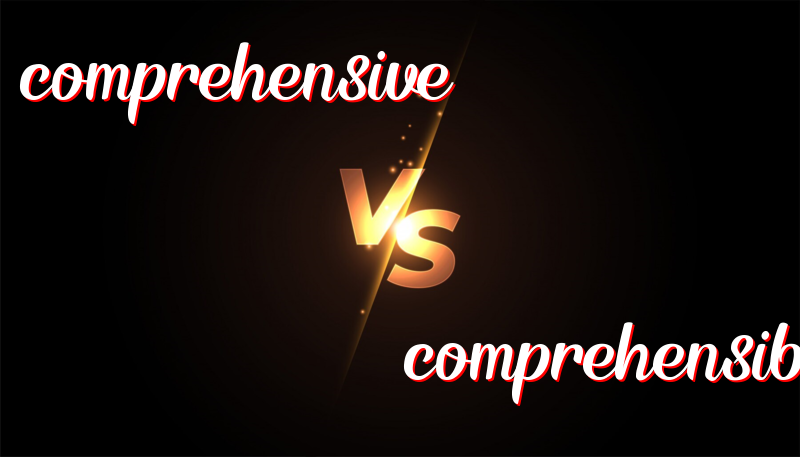Understanding the Differences: Comprehensive vs. Comprehensible
Difference between “Comprehensive” and “Comprehensible”
Word History
Both “comprehensive” and “comprehensible” come from Latin roots. These words are related to the idea of “grasping” or “understanding.”
Meaning and Usage
Comprehensive means “complete” or “covering everything.” It describes something that is full and includes all important parts.
Comprehensible means “easy to understand.” It describes something that can be understood quickly and easily.
How to Use “Comprehensive”
- The teacher gave a comprehensive review before the test.
- This book provides a comprehensive guide to cooking.
- We need a comprehensive plan to finish the project.
- Her knowledge of history is comprehensive.
- The report offers a comprehensive analysis of the data.
How to Use “Comprehensible”
- Her explanation was comprehensible to all the students.
- The instructions were comprehensible and easy to follow.
- Make your writing comprehensible by using simple words.
- The story is comprehensible for young readers.
- He spoke clearly, making his presentation comprehensible.
Trick to Remember the Difference
To remember the difference, think of comprehensive as “complete” with a “p” for “plenty of details.” Think of comprehensible as “clear” with an “h” for “helps to understand.”
Summary
Use comprehensive when you want to say something is thorough and complete. Use comprehensible when you want to say something is easy to understand. Remember: “Plenty of details” for comprehensive, “Helps to understand” for comprehensible.

Leave a Reply
You must be logged in to post a comment.